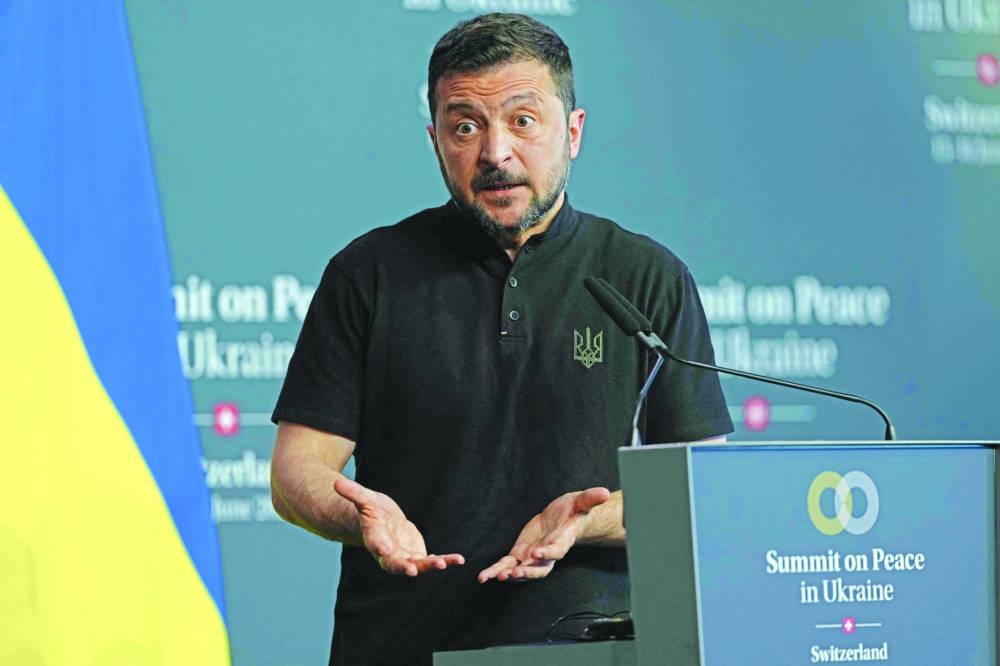Moreover, unlike natural disasters, the ongoing war in Ukraine has taken a greater toll on the country’s finances, necessitating massive military and economic aid. Consider that in 2022-23, Ukraine relied on $74bn in budgetary assistance from its international partners to keep the government functioning. This suggests that almost all reconstruction funds will come from foreign donors.
Managing an undertaking as costly and complex as Ukraine’s postwar reconstruction will require a comprehensive, systems-oriented approach. Digital tools, in particular, should be used to streamline the process, increase transparency, and provide accountability.
To that end, the Ukrainian government has already established the Digital Restoration Ecosystem for Accountable Management (DREAM), while a coalition of NGOs has developed the Big Recovery Portal, to collect, organise, and publish open data on recovery projects at all stages. This helps create an environment where citizens and organisations can actively participate in the oversight process.
These systems are a step in the right direction. But when it comes to implementing them, it is instructive to consider recent large-scale reconstruction programmes. Specifically, the rebuilding of Aceh after the 2004 Indian Ocean tsunami, an effort led by the Indonesian government and supported by the World Bank, holds important lessons for how to use digital tools effectively and efficiently.
First, it is important to remember that, even with the latest technology, people need to track money. Data collection and analysis remain labour-intensive, as automated information systems are invariably susceptible to errors that only humans can detect. In Aceh, in the early phase, data on reconstruction projects were not always consolidated or analysed, resulting in double-counting. Moreover, the people entering data were overwhelmed by the level of detail required for tracking outcomes, meaning that even easy-to-obtain financial information was initially not available.
Second, excessive planning has delayed many reconstruction efforts. Instead of creating a master plan, as Indonesia did for Aceh, Ukraine should establish a framework with core principles such as minimum requirements for building design and construction in order to focus on speed. Some projects – interim housing, for example – will necessarily be temporary. Platforms like DREAM and the Big Recovery Portal should thus capture reconstruction data in real time to ensure continuous analysis and eventual course correction.
Third, Ukraine should track financial commitments and disbursements separately. The Kiel Institute for the World Economy is already listing and quantifying the support that governments have committed to Ukraine. But monitoring disbursements will be just as important because they better reflect on-the-ground activities. This can be challenging, as funding often flows through many channels and is recorded at various stages before it reaches beneficiaries, and careful tracking will be required to prevent double- and triple-counting.
In Aceh, the Reconstruction Expenditure Tracking Analysis Methodology captured individual projects at the level of the executing agencies to avoid this problem. DREAM should do the same in Ukraine.
Moreover, aid must be distributed equitably. After the tsunami, government monitoring in Aceh found that the majority of recovery funds were initially allocated to health and education projects, rather than essential infrastructure, owing to donors’ priorities. To avoid this outcome, DREAM should separate funding types, which would allow it to exclude emergency assistance and focus instead on investments aimed at replacing damaged or destroyed assets such as schools, bridges, and roads. Such an approach, coupled with a strategy that considers the needs of all sectors and regions, would highlight the practical aspects of fund utilisation, especially where aid is allocated, and promote the reconstruction of critical infrastructure.
But effective aid delivery depends as much on local capacity as it does on financing streams. Thorough and realistic needs assessments are thus an important part of reconstruction efforts, as they can improve alignment with available resources.
In Aceh, the cost of rebuilding was initially estimated at $6.2bn (including inflation). But while the total amount of financial resources for reconstruction exceeded $7bn, allocation gaps in the environmental, energy, food, and irrigation sectors have limited recovery to pre-tsunami levels.
Lastly, while a wide range of donors and implementing agencies are contributing to Ukraine’s reconstruction, strategic management of the most important players – the institutions accounting for roughly 85% of the total portfolio – is crucial. This will ensure that the bulk of investments are used as efficiently as possible and adhere to the highest standards of transparency and accountability. Establishing a centralised co-ordination body and data-management system could help achieve this. It would also foster a unified approach to rebuilding the country, whereby the largest donors are aligned with the government’s goals and with each other.
When reconstructing Aceh, the World Bank team worked closely with the top ten donors and carefully analysed the government’s reconstruction budget, leading to a more co-ordinated effort. But that is not to say that only the largest projects are relevant to strategic planning and resource allocation. On the contrary, projects of all sizes should be meticulously tracked to develop a comprehensive strategy. Ukraine’s reconstruction needs will be vast. Given this, and because the Ukrainian population has suffered enormously from Russia’s war of aggression, the international community must draw the right lessons from recent catastrophes to help the country rebuild quickly and to the highest standards. As Ukraine prepares to embark on tens of thousands of critical infrastructure projects, it will need the right digital tools and human capacity to monitor its progress. — Project Syndicate
- Wolfgang Fengler, a former lead economist at the World Bank, is CEO of World Data Lab.
- Vladyslav Rashkovan is an alternate executive director at the International Monetary Fund.

